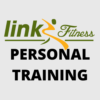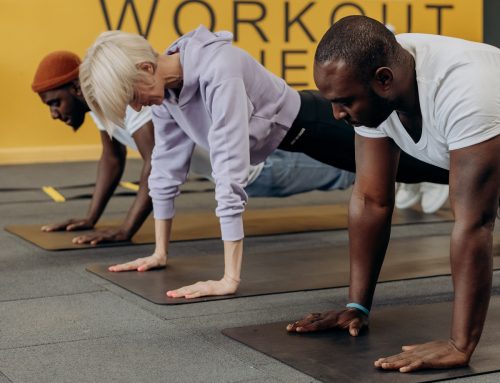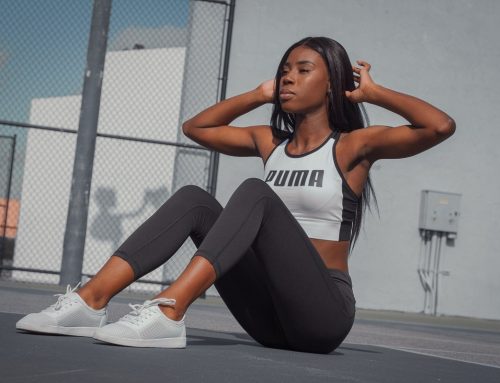 Are squats bad for your knees? This is a question that will get an equivocal ‘yes’ from most fitness enthusiasts and especially those who have knee pain and other knee complications.
Are squats bad for your knees? This is a question that will get an equivocal ‘yes’ from most fitness enthusiasts and especially those who have knee pain and other knee complications.
Majority of gym goers never get near the squat rack reason being that squatting has damaged their knees. I meet such kind of people on a daily basis who hate squats and as a result, end up having imbalanced physiques. They hate doing squats just because someone told them that squats are dangerous and should be avoided at all costs.
If you’ve been avoiding squats like the plaque, I’d like you to take time and assess your technique. Find out if whatever you’ve been doing is the cause of your knee pain.
Ask for Help and Master Squats
Majority of people never get the squat exercise right. Therefore, they require proper coaching from an experienced trainer to be able to execute it flawlessly.
It’s shocking whenever I see some trainers who cannot even demonstrate and execute a good squat. This is ironical because it would be impossible for them to coach and teach what they haven’t mastered.
Squats don’t hurt your knees, it’s whatever you’re doing and how you’re doing it that’s the problem. However, if your knees are always in constant pain, then don’t go blaming squats for it, rather, you should get a medical checkup to rule out any other underlying issues.
A correctly performed full squat produces greater overall muscle development in all the lower body muscles. In addition, an ability to perform one is an excellent indicator of your overall movement quality.
Don’t be scared of doing squats. This is a movement that you can never escape in your entire existence. The squat is a perfectly natural human position and you must be able to do it with ease and grace. Whether you’re sitting on a couch or accomplishing your daily morning toilet rituals, the squat is the foundation of all your lower body movement patterns.
Below are the most common mistakes that might be causing knee pain every time you attempt to squat:
- Relying on the Smith Machine. If you haven’t mastered the proper squat technique, steer clear of the Smith Machine until you learn how to squat correctly. In fact, you increase your chances of getting injured while using the Smith machine. Here’s the reason; when you use the Smith machine for squats, you tend not to engage your core properly.
Consequently, you’ll round your back with every repetition that you do. The positioning of your feet is very tricky as you’ll either stand too way in or out of the Smith Machine. Learn to do the squat using free weights and master excellent form. Afterward, you can use the Smith or choose to totally ignore it.
- Your weight is too far forward. This is where all the stress of the weight you’re lifting is borne by your back. When you squat in this position, you’ll feel the weight in the balls of your feet. This increases the compressive stress in your knees. Learn how to squat correctly by fixing this common mistake to avoid incidences of painful knees.
- Your knees collapse inwards or too far out. Due to muscular imbalances in the legs, particularly weak inner thighs combined with over-pronation (feet collapsing inwards), you will feel pain on the inner side of your knees every time you do a set of squats. To fix this, position your feet directly under your knees regardless of whether your squat stance in narrow or wide.
- You are doing a quad dominant squat. Quads or quadriceps are muscles on the front of your thigh. A quad dominant squat happens when you initiate the movement by bending at the knees first. You should, however, begin by bending by both your knees and hips simultaneously. Effectively, jutting your knees forward makes you lift your heels off the ground and keeps your back flat which is a recipe for back and knee injuries.
Learn to squat correctly
You should never begin learning to do squats using a Smith Machine. The best way to learn a good squat technique is to start by practicing body-weight squats. Work on mastering them first before you even think of adding any form of resistance.
It is important to understand that the squat is not a knee dependent exercise. It’s a hip movement and when done right, your knees won’t take most of the stress. The correct squat drives hips back and knees slightly out on the descent. This puts most of the pressure in the hips where it should be.
You should feel the weight in your heels at all times when squatting. This way you activate your glutes and remove almost all the pressure from your knees.
The Goblet and Sumo Squats
To teach excellent squat mechanics, I normally start off my beginner clients with two of my favorite squat versions. These are the Goblet squat and the Sumo Squat. These squats will help you load the muscles that you should actually be training- your hips and glutes.
If you have any knee problems, you should discard all other leg exercises and concentrate these two variations.
Another good variation that will teach you to do a perfect squat is the Box Squat. When you practice these movements, your form will improve a lot. You’ll learn to keep your back neutral by pulling your shoulders back and by keeping your core engaged.
In addition, your neck will be relaxed, your knees pushed out, and your hips drove to the ground. Keep doing this, and you’ll build a nice toned butt and legs that you’ll be proud of. Furthermore, painful squats will definitely be a thing of the past.
Should you do partial or full squats?
There has been a long-standing controversy in the fitness industry about whether to do partial or deep squats. Advocates of the parallel squat claims that squatting to below parallel will make your knees weak, unstable and eventually damaged. This is a myth that should have died a long time ago.
Research published in the Journal of Strength and Conditioning Research indicates that performing full squats (slightly below parallel) is not in any way harmful to your body. You can build healthy knees doing them instead of the less effective lesser range variations.
The entire sport of powerlifting is anchored on deep squats. These guys perform deep squats with unimaginable amounts of weight for years without developing any knee problems at all.
Conclusion
Forget partial squats. They are a waste of your precious time. To better develop your legs, learn to do below parallel squats correctly. Start with a lightweight and keep increasing the resistance gradually as your strength levels improve. Achieve superior gains in terms of balance, power, coordination, and improved bone density.
Are squats part of your regular training program?
If your answer is yes, then well done! However, if you’ve become good at coming up with countless excuses to skip leg day, now you know better. Use the information in this article to avoid the skinny legs syndrome for good.





